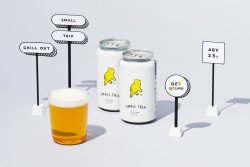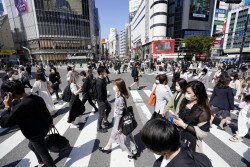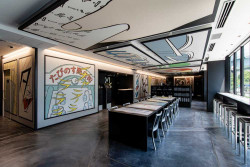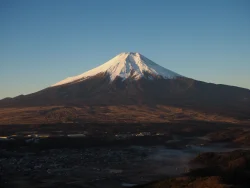
September 3, 2009
Weekends are for Racing
A Daytrip to Tokyo Racecourse offers fun, excitement—and a definite break from the ordinary
By Metropolis

The handy racing program—also available for free at the info desk—is an easy way to get an overview of all the horses in each race, with detailed information right down to the weight of the jockey and birthplace of the mounts. Bettors can find more information by consulting the odds for each horse, which are flashed on the thousands of video screens throughout the complex before each race. If you’re yearning for that extra bit of insight, pick up a sports newspaper and have a look through the experts’ opinions.
No matter how much effort you put into choosing your horse, purchasing the actual bets is the easiest part of the process. Throughout the stands are automatic betting machines—little terminals that look like ATMs—with hungry mouths for both your betting slips and your money. A handy guide to using the machines is provided on the back page of the “How To Bet” booklet, and anyone who has ever bought a train ticket will be able to figure out where to feed in the necessary items and get their betting tickets.
 Now that you’re all set with your bet, the next step is to decide where to perch yourself to watch the race. Visitors to Tokyo Racecourse can check out the action from any number of prime vantage points: on one of the huge video monitors scattered about inside the grandstand building; from a posh Reserved Seat on the fifth and sixth floor of the Fujiview grandstand; or in the stands at the center of the racecourse, where you’ll enjoy a 360-degree view of the action.
Now that you’re all set with your bet, the next step is to decide where to perch yourself to watch the race. Visitors to Tokyo Racecourse can check out the action from any number of prime vantage points: on one of the huge video monitors scattered about inside the grandstand building; from a posh Reserved Seat on the fifth and sixth floor of the Fujiview grandstand; or in the stands at the center of the racecourse, where you’ll enjoy a 360-degree view of the action.
No matter where you sit, though, if you’re in sight of the finish line, you’ll be able to check out the stunning “Multi-screen Turf Vision.” At 66.4m long and 11.2m high, this monitor is recognized by Guinness World Records as the largest display on earth. The surreally high-definition screen is almost constantly flashing with race information and live video of jockeys and their mounts thundering down the track.
If you want to experience the intense energy of the horseracing up close, head to the viewing area in the grassy spot between the grandstand and the tracks. While this space is standing room only during major races like the Japan Cup, on quieter days it’s the best place to lay down a tarp, crack open a beer, and feel the pounding of hooves as the racers fly by. Even for spectators who kept their money safely in their wallet, it’s a moving experience.
 For those lucky—or clever—enough to win their bets, the process of collecting your booty is easy as pie. Just head to the banks of payout machines, which are conveniently located next to the betting machines. With just the push of a button, your hard-earned riches pour forth, ready to be re-inserted for more betting or tucked away for beer money later.
For those lucky—or clever—enough to win their bets, the process of collecting your booty is easy as pie. Just head to the banks of payout machines, which are conveniently located next to the betting machines. With just the push of a button, your hard-earned riches pour forth, ready to be re-inserted for more betting or tucked away for beer money later.
Betting on the horses can be downright addictive, so after one or two races, it would be wise to take a break and check out the rest of Tokyo Racecourse’s expansive grounds. With over 177 acres of land—that’s almost 1.5 times bigger than Yoyogi Park—there is certainly plenty to explore.
The enormous grandstand areas host a variety of restaurants and cafés, and you can also hit up the gift shop or surf around on the wireless internet. Things get even better outdoors, where the Tokyo Racecourse truly delivers you out of the urban jungle and into the weekend. While Yoyogi and Komazawa parks have their own charms, there’s probably nowhere else in Tokyo with so much greenery, open seating, and a lack of snoozers on the benches.
 One of the high points for gamblers and non-betting spectators alike is the parade ring. Here, fans can check out the horses for the next race up close, as the powerful animals are led around for inspection. For those who want a hands-on equine experience, there’s also a Horse Riding Center—yes, you can ride a horse, in Tokyo, for free!—carriage rides and stables. Top the afternoon off with a visit to the JRA Racing Museum and learn about Japan’s racing tradition, as well as get information about the sport worldwide.
One of the high points for gamblers and non-betting spectators alike is the parade ring. Here, fans can check out the horses for the next race up close, as the powerful animals are led around for inspection. For those who want a hands-on equine experience, there’s also a Horse Riding Center—yes, you can ride a horse, in Tokyo, for free!—carriage rides and stables. Top the afternoon off with a visit to the JRA Racing Museum and learn about Japan’s racing tradition, as well as get information about the sport worldwide.
The beauty of Tokyo Racecourse is many-fold, with a variety of activities for both adults and children, and wide, green spaces in addition to the thrill of horseracing. Perhaps the best part of the experience is the simple fact that, for ¥200, visitors not only gain access to the park and all the goodies in it, but they’re also free to bring in food and drinks and make themselves at home in any open area in the complex. Sitting on green rolling hills under trees, beer in hand, while watching the action fly by? Now that is what weekends are for.


October: 10-11, 17-18, 24-25, 31
November: 1 (TENNO SHO*), 7-8, 14-15, 21-22, 28-29 (Japan Cup*)
Access: Take the Keio line from Shinjuku station to Higashi-Fuchu station and transfer to the Keio Keibajo line, getting off at Fuchu Keiba Seimon-mae station
Address: 1-1 Hiyoshi-cho, Fuchu, Tokyo
*TENNO SHO & Japan Cup are two of Japan’s biggest races
 September: 12-13, 19-20, 26-27
September: 12-13, 19-20, 26-27
October: 3-4 (Sprinters Stakes*)
December: 5-6, 12-13, 19-20, 26-27 (Arima Kinen*)
Access: Take the JR Musashino line from Tokyo station to Funabashi-Hoten station (about 30 minutes)
Address: 1-1-1 Kosaku, Funabashi, Chiba
*Sprinters Stakes & Arima Kinen are two of Japan’s biggest races
![]() JRA official site: http://japanracing.jp
JRA official site: http://japanracing.jp
How to Bet: http://japanracing.jp/guide/jra.html







